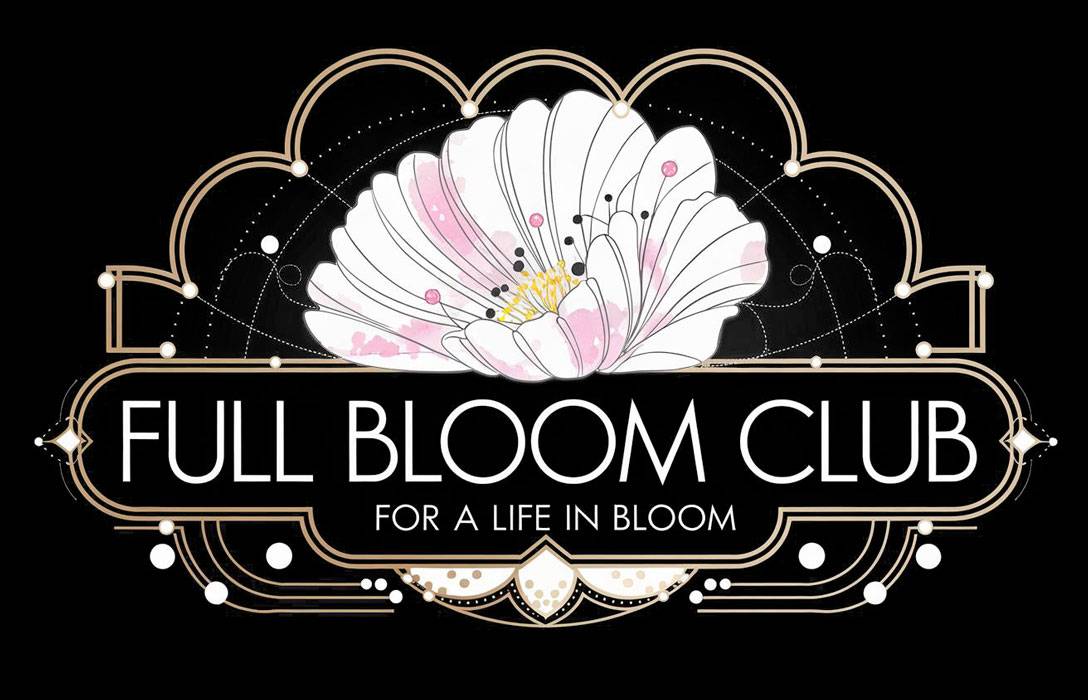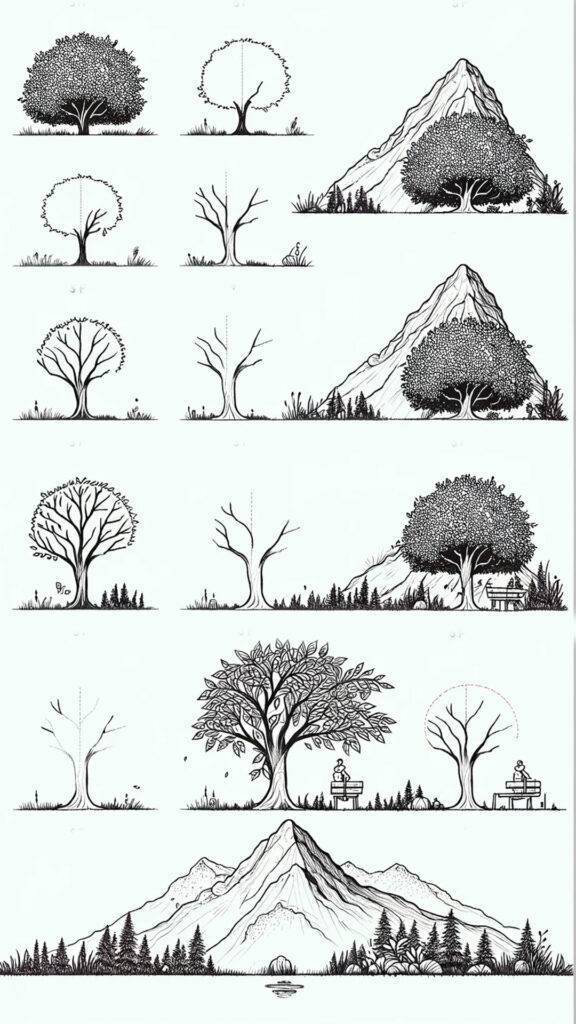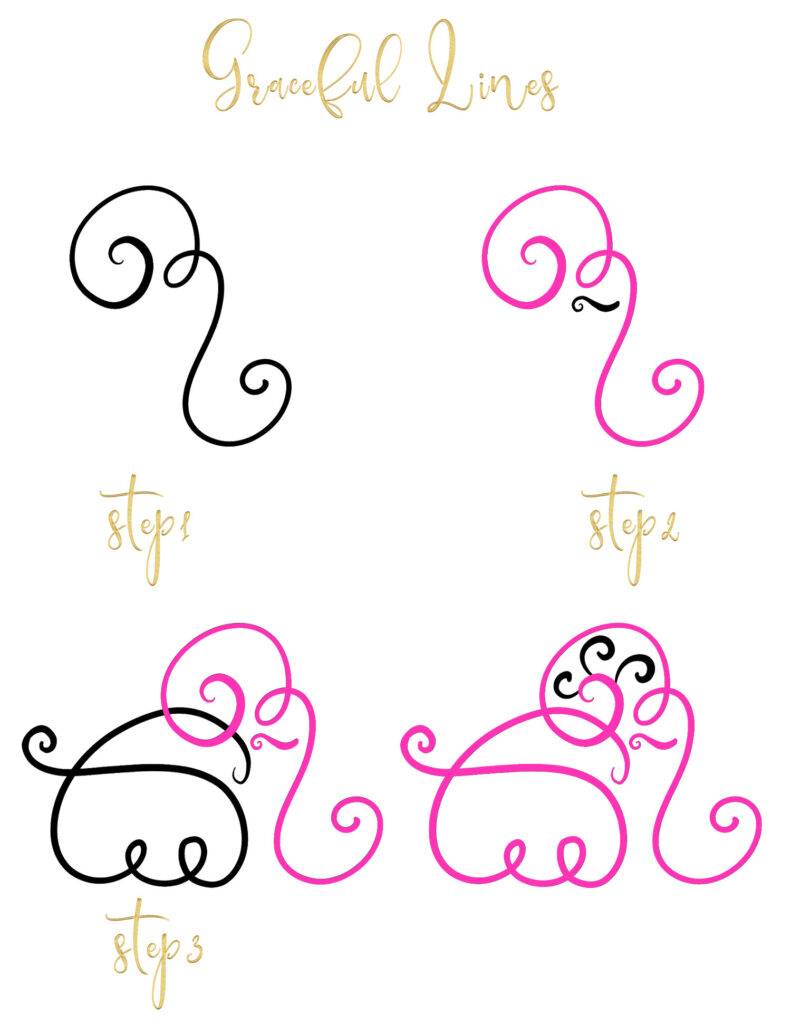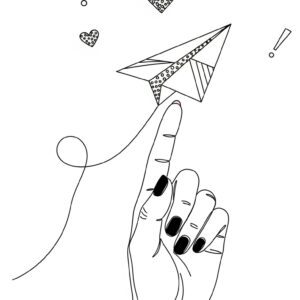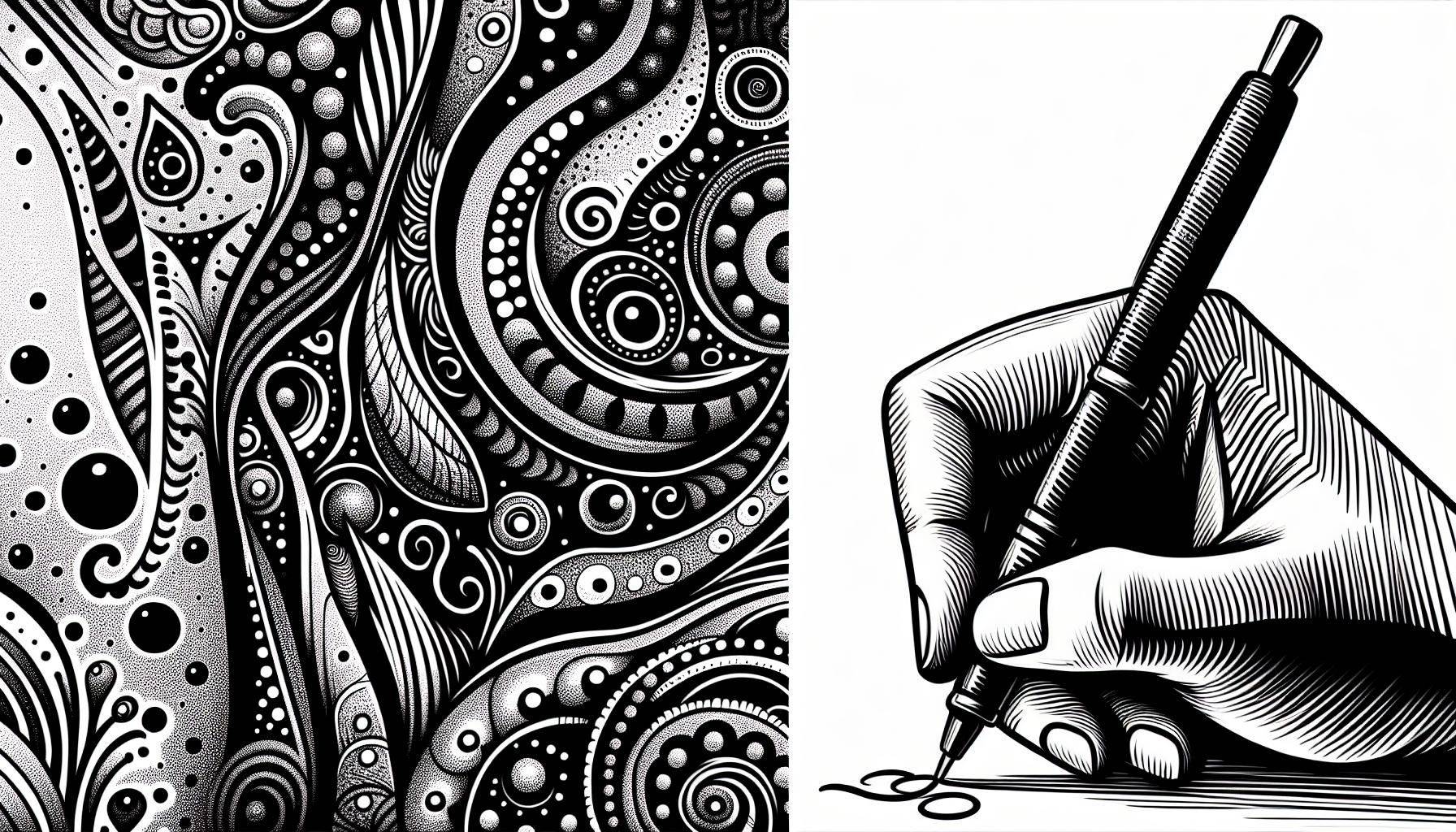18 Relaxing and Beautiful Pencil Sketch Drawings Step by Step

Pencil sketch drawings are a really enjoyable and straightforward way to express your artistic ideas and put lovely images onto paper. It’s great for everyone, whether you’re just beginning to draw or you’ve been doing it for years. Using pencils to sketch is not only easy but also creates beautiful results. It’s a relaxing and satisfying way to spend your time.
This article will guide you through 18 easy-to-follow steps for creating pencil sketch drawings. Each step is designed to be not only visually appealing but also a calming and enjoyable activity. You’ll learn how to make sketches that are both simple and stunning, perfect for artists of any level looking for a stress-free drawing experience.
We also have an article dedicated to Easy Pencil Drawings Secrets and 39+ Beautiful Ideas For It – read it HERE.
To learn the art of graceful lines, try our this idea:
Let your imagination take over, and explore the different possibilities of graceful lines for your pencil sketching!
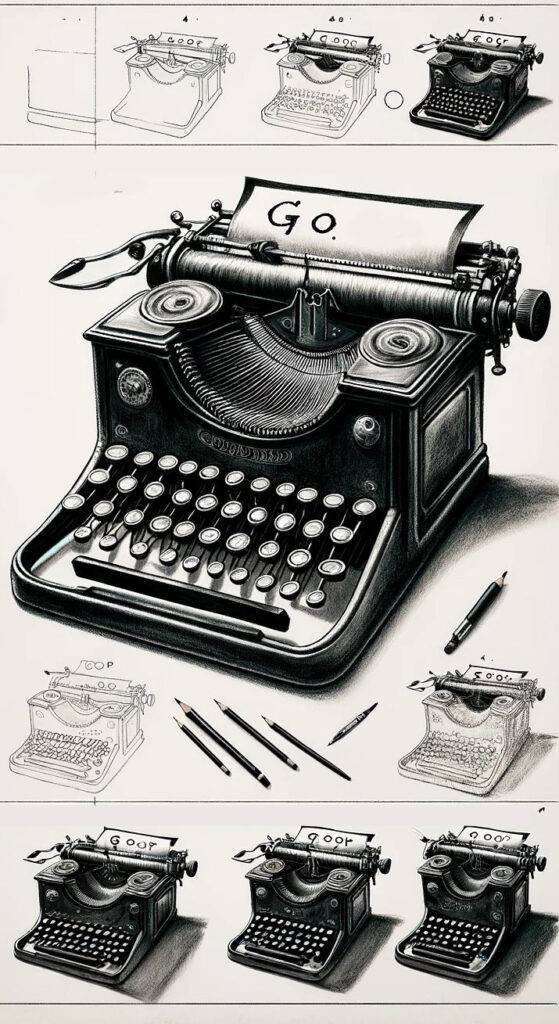
Tips For Pencil Sketch Drawings:
When you’re starting to draw with a pencil, there are some helpful things you can keep in mind to make your drawings better.
- Start with Soft Touches: When you first put your pencil on the paper, use a gentle touch. Don’t press too hard. This makes it easier to change things if you need to. You can add more lines or erase bits easily when you start lightly.
- Practice Making Shadows: Try different ways of making shadows with your pencil. Shadows make your drawings look more real, like they have depth. Sometimes, pressing harder or softer with your pencil can create different shades of dark and light.
- Look Around and Draw: Pay attention to the things around you. Look closely at how things look – their shapes, shadows, and details. Then, try drawing them. This helps you learn and get better at drawing by looking at real things.
- Take Your Time: Don’t hurry when you’re drawing. Rushing might make mistakes more likely. So, relax and enjoy drawing. It’s not about being perfect; it’s about having fun and learning.
- Try Different Pencils: There are many types of pencils, like HB, 2B, or 4B. Each pencil makes different shades. Some are lighter, some darker. Trying different pencils helps you make different kinds of lines and shades in your drawings.
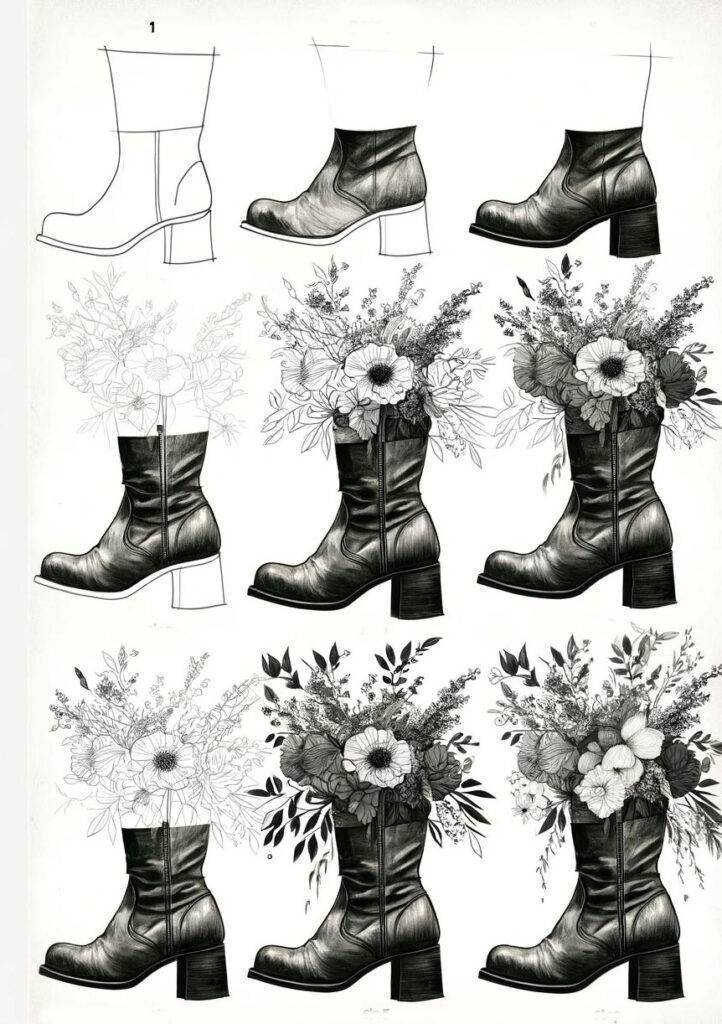
When you draw, remember to start softly, practice shading for depth, observe things around you, be patient, and try using different pencils. These tips can make your drawing experience more enjoyable and help you improve your skills bit by bit. Don’t worry if things don’t look perfect at first – drawing is about learning and having fun!
Download 100 Step-by-step Trending Drawing GuidesEssential Tools for Pencil Sketching
When you’re getting ready to draw with a pencil, it’s important to have the right tools. These tools will help make your drawing experience easier and more enjoyable.
- Different Pencils: You’ll need various pencils with different darkness levels. Some pencils make light lines, and some make dark lines. This way, you can create lots of different shades and textures in your drawings. Soft pencils (like B grades) are darker, while hard pencils (like H grades) make lighter lines.
- Eraser: A special kind of eraser, called a kneaded eraser, is super useful. It can lift the pencil marks off the paper without ruining it. So, if you make a mistake, this eraser helps fix it without making a mess.
- Good Paper: Using the right paper is important too. You’ll want paper that’s not too rough and not too heavy. Smooth and medium-weight drawing paper works well for pencil drawings. It lets you make lines easily and blend the pencil colors smoothly.
- Pencil Sharpener: Having a sharp pencil is important for making precise and neat lines. A pencil sharpener helps keep your pencils pointed so that you can draw small details and lines without any trouble.
Before you start drawing with your pencil, make sure you have these tools ready. They’ll make your drawing experience more fun and help you create different shades, fix mistakes, and draw fine details easily.
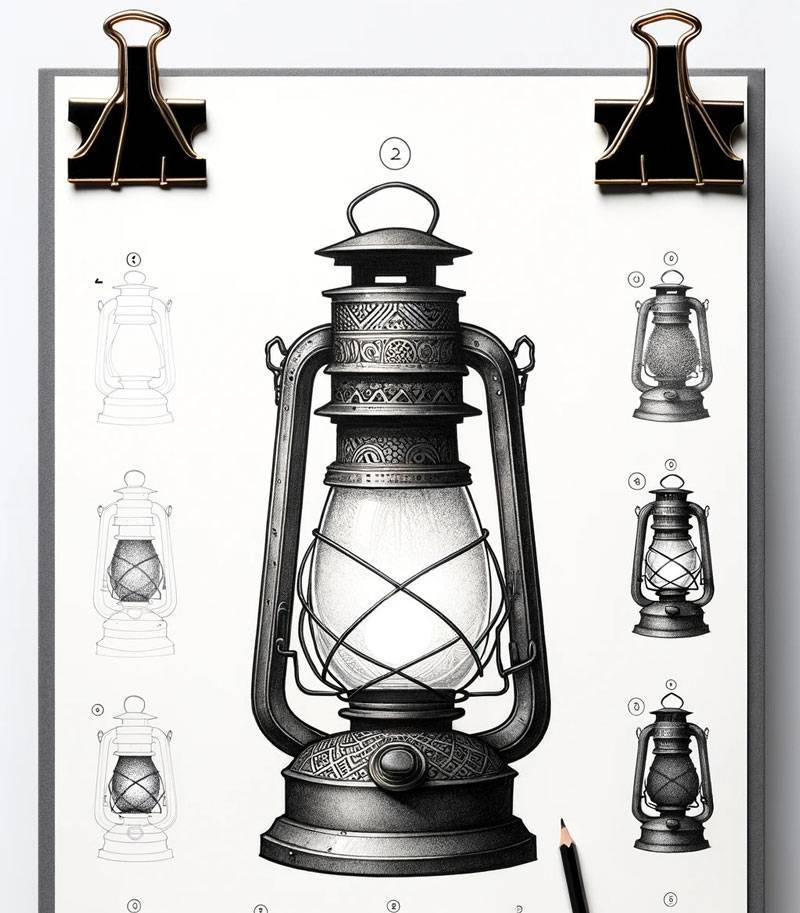
Exploring Advanced Pencil Sketching Concepts
When you start feeling more comfortable with drawing and want to make your pencil sketch drawings even better, you can try out some more advanced tricks. These techniques can help you make your drawings look more realistic and interesting.
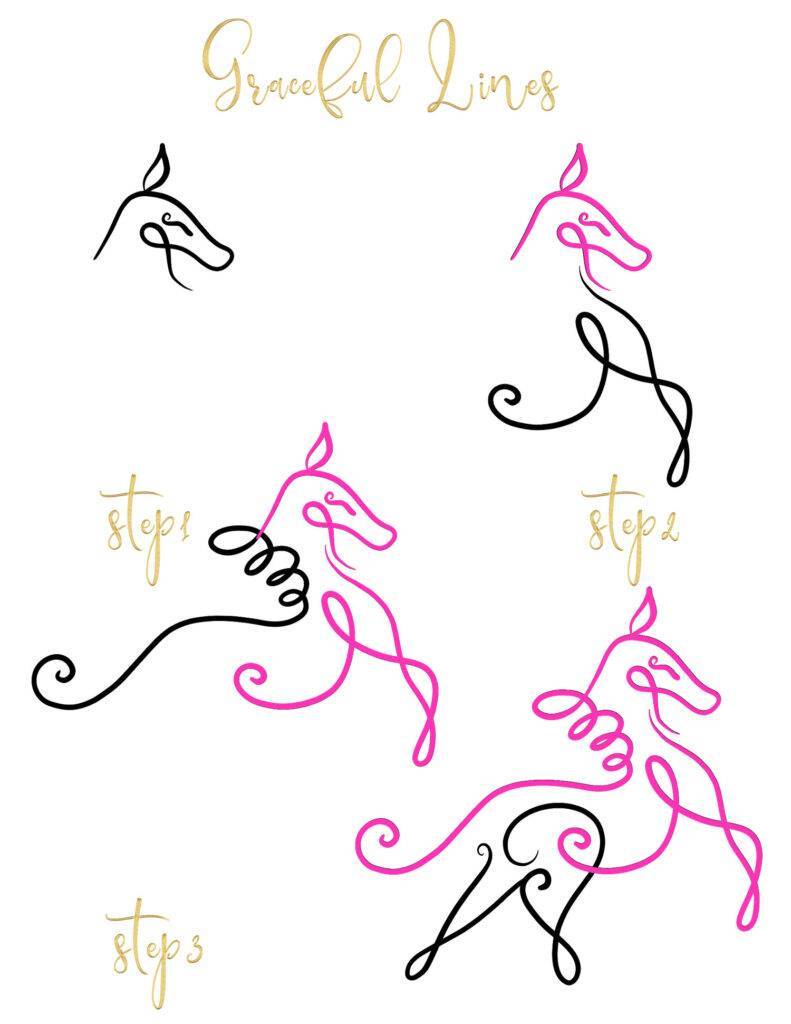
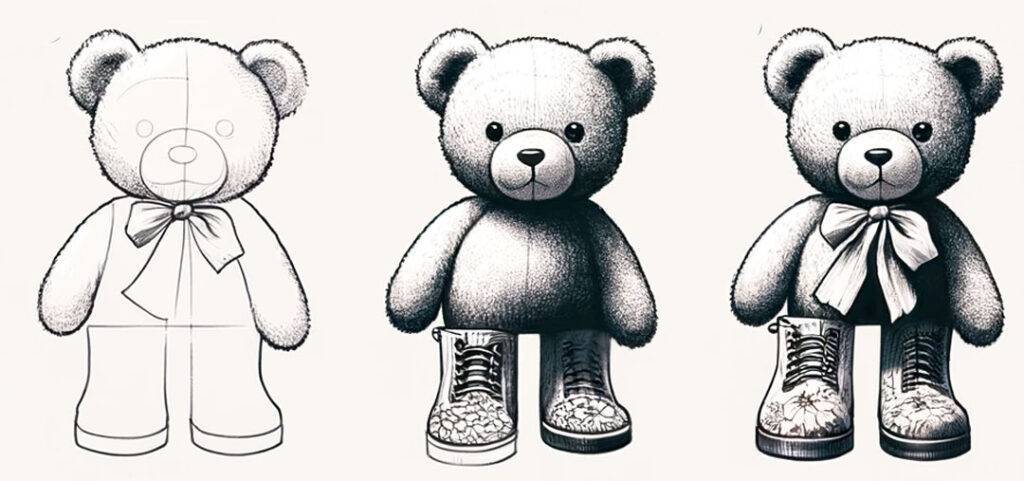
- Making Things Look Realistic: To make your drawings look more real, try using something called perspective. It’s a way of drawing that makes things look like they’re farther away or closer. When things are far away, they look smaller and have fewer details.
- Drawing Things at Different Angles: Sometimes, things can look different when they’re at an angle or seen from far away. This thing is called foreshortening. Learning foreshortening helps you draw things more accurately, even when they’re not straight.
- Drawing Movements: If you want to show things moving in your drawings, try gesture drawing. It’s about quickly drawing the movements of things with fast and expressive lines.
- Creating Textures: To make your drawings more interesting, you can use cross-hatching and layering. This means drawing lots of lines that cross over each other or putting one layer of drawing over another. It makes your drawings look like they have different textures.
- Using Empty Spaces: Sometimes, not drawing something can make your drawing look better. This is called negative space. It’s about using the empty spaces around your drawing to show the shapes and forms of what you’re drawing. It makes things stand out more.
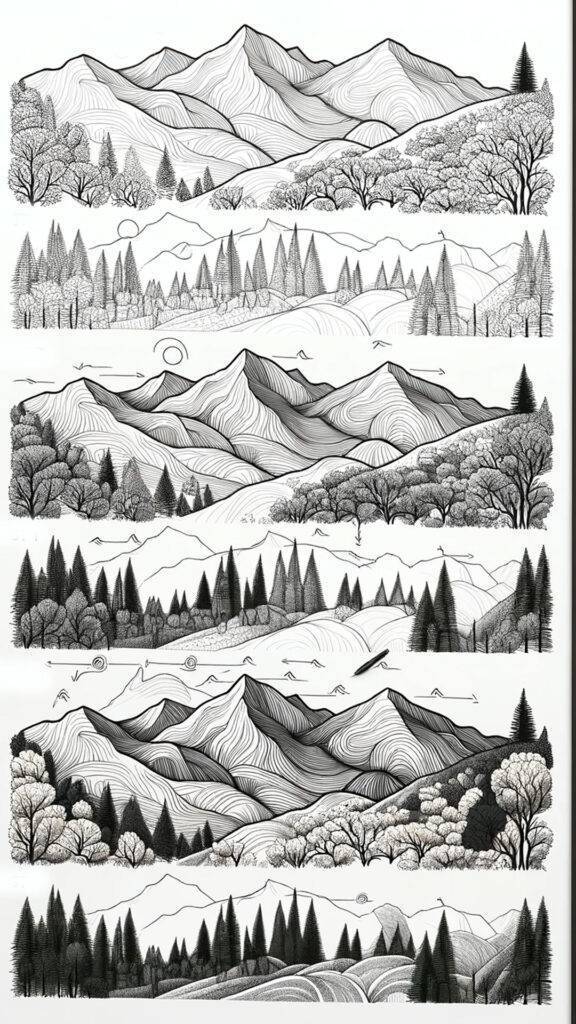
As you get more comfortable with drawing, trying out these tricks can make your drawings look cooler and more realistic. They might take a bit of practice, but experimenting with these techniques can make your pencil sketches even more awesome!
Download 100 Step-by-step Trending Drawing GuidesInspiration from the Masters
If you want to get better at drawing with a pencil, it’s a great idea to look at drawings made by famous artists. There are artists like Leonardo da Vinci, Albrecht Dürer, Rembrandt, and John Singer Sargent who made amazing drawings using pencils. When you look at their drawings, try to notice how they used light and shadows to make things look real. Pay attention to the shapes they drew and how they made things seem three-dimensional.
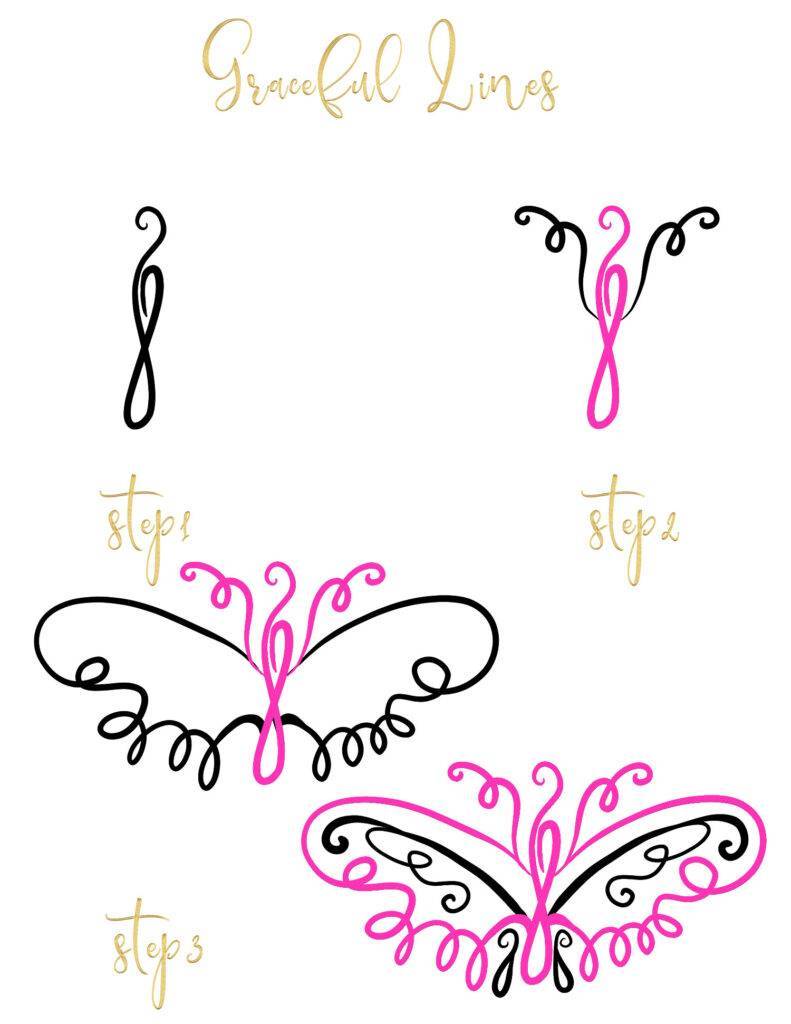
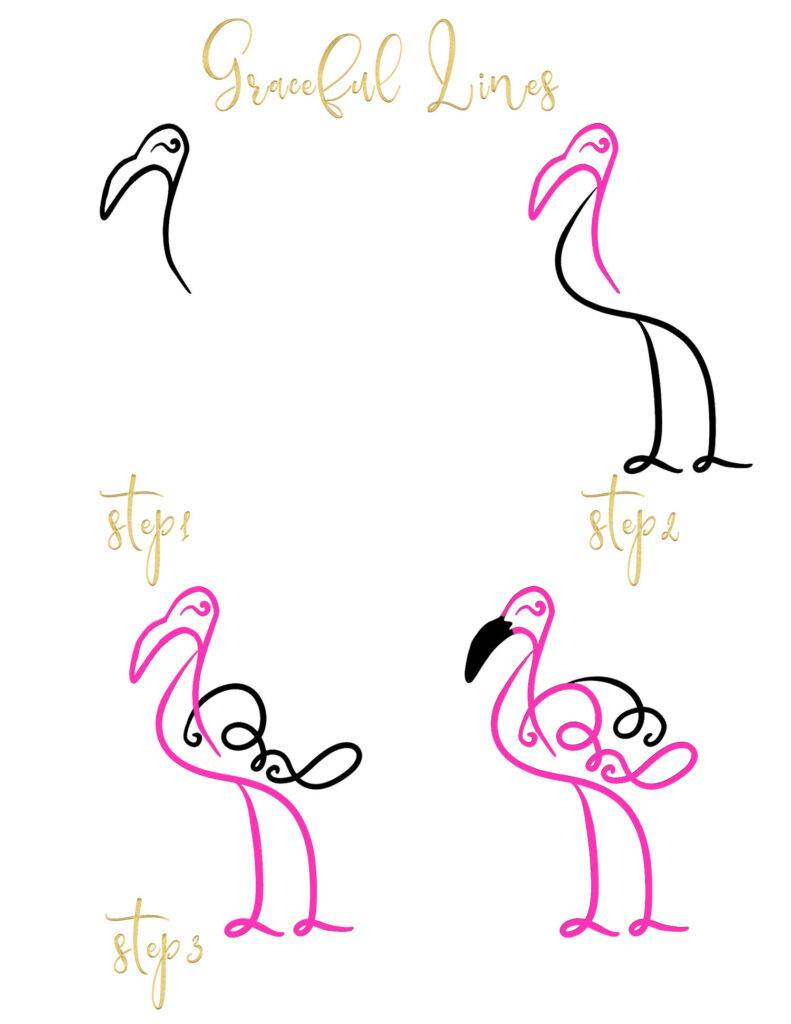
By studying their drawings, you can learn new ways to make your own drawings better. You might get cool ideas for your own pencil sketch drawings or learn tricks to make your drawings look more detailed and realistic. Looking at the drawings of these famous artists can be really inspiring and can teach you lots of interesting things to improve your own drawings.
Practice Makes Perfect
Drawing with a pencil is a journey where you keep learning and trying new things. It’s about practicing and making mistakes, too. But that’s okay! Embrace the challenges and the things that aren’t perfect in your drawings. Every time you draw, you’re getting better, even if it doesn’t look perfect. Celebrate each time you learn something new or improve even a little bit.
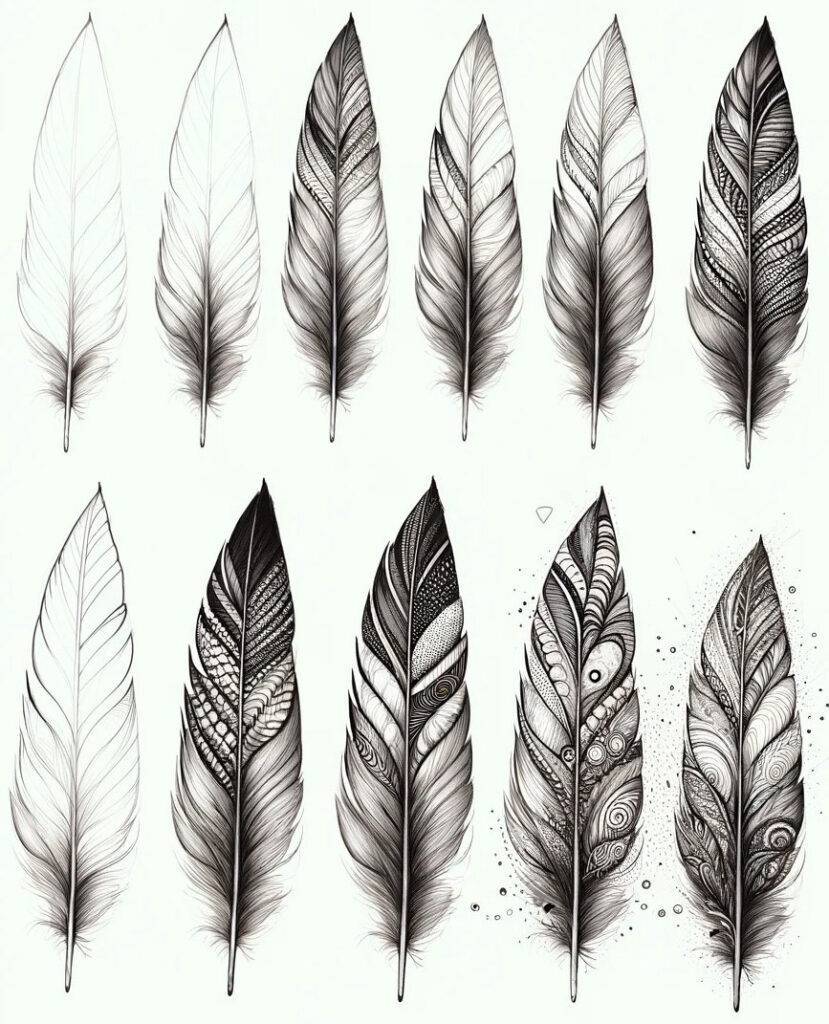
The more you practice and dedicate time to drawing, the better you’ll get. You’ll notice that your drawings will start looking better, and you’ll feel more confident in your drawing skills. Remember, it’s a journey; every step you take helps you become a better artist.
Get Zen Doodle Mastery Toolkit with Feather BonusesImportance Of Pencil Sketching
Drawing with pencils is really important in art and expressing yourself for a few reasons.
First, it’s a basic skill for artists, whether they’re just starting or they’ve been doing it for a while. When artists draw with pencils, it helps them get better at using their eyes and hands together, understand shapes, and get better at noticing things. This helps them in other kinds of art like painting or making sculptures.
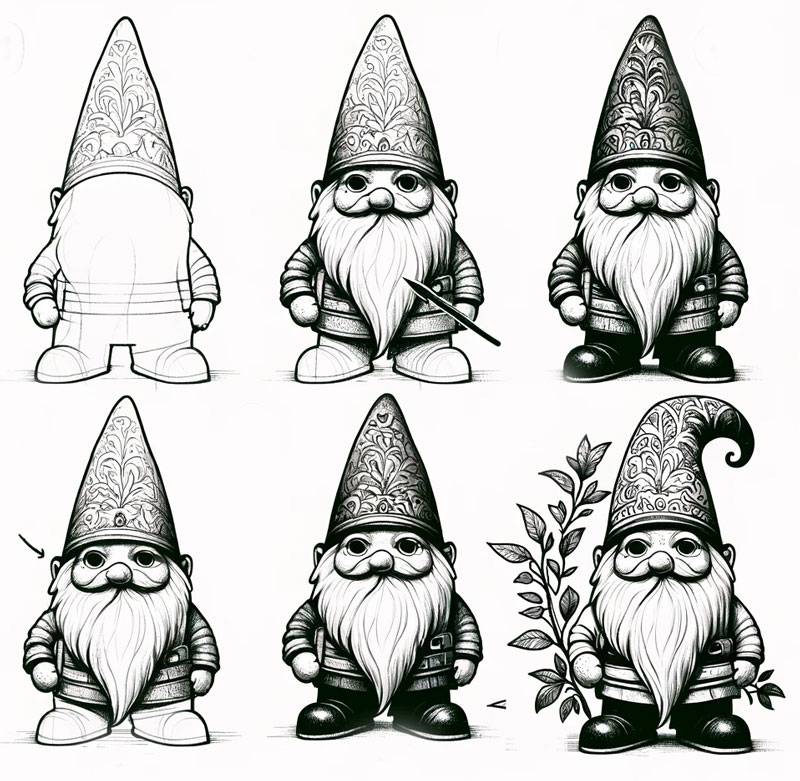
Pencil drawing is also easy and flexible for expressing creativity. You only need a pencil and paper, which anyone can start doing. Because it’s so simple, it’s perfect for people of any age to explore their artistic ideas and be imaginative.
Pencil sketches have a special charm. The lines and strokes made by a pencil can show feelings and catch details in a way that feels real and true. Using only black and white can help focus on the main parts of what’s being drawn, like shapes and light.
To learn the art of colorful graceful lines, try out this idea:

Drawing with pencils is like a fast way for artists to keep their ideas and memories. These sketches are like a diary of what they think and see. They can use these sketches to plan out bigger, more detailed artworks.
Also, drawing with pencils lets artists try out new things without worrying about making mistakes. It’s a way to learn and be creative without feeling stuck. It’s a safe space to practice and grow as an artist.
Download 100 Step-by-step Trending Drawing GuidesIn addition to these general benefits, pencil sketching is also an essential skill for many professional fields, such as:
- Architecture
- Product design
- Interior design
- Fashion design
- Illustration
- Animation
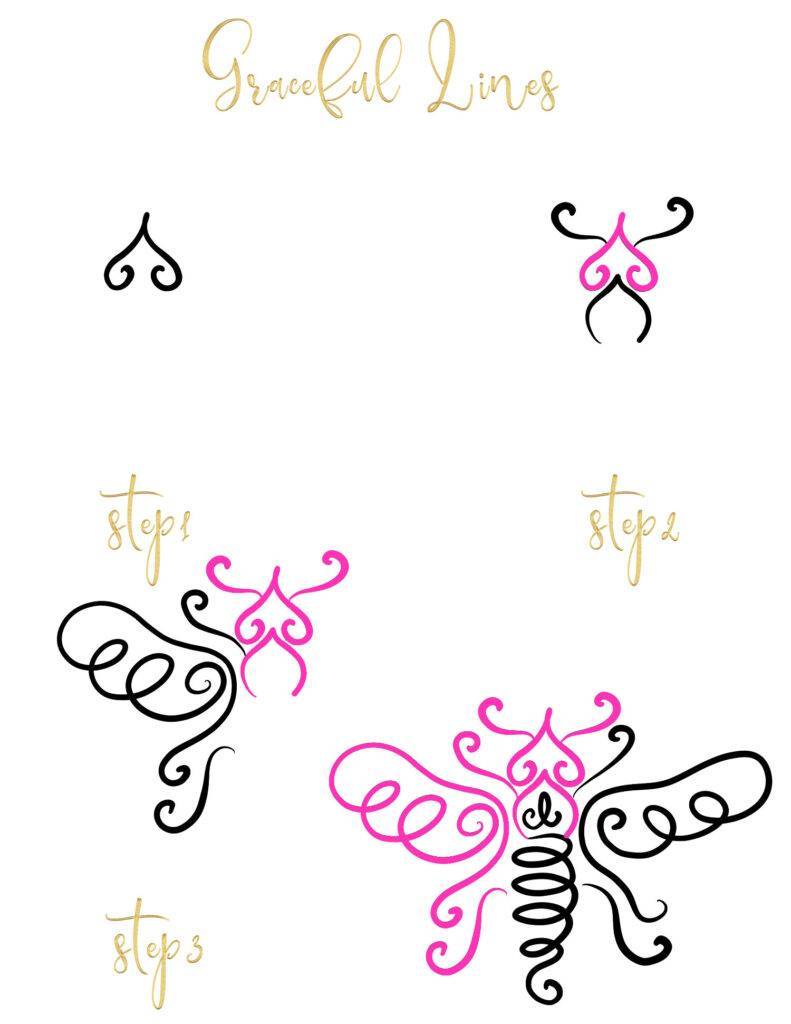
Fun Facts about Pencil Sketching
- Historical Significance: The pencil, as we know it today, was developed after the discovery of a large graphite deposit in England in the 16th century. Artists quickly adopted this new material for its versatility and ease of use.
- Graphite Grades: Pencil sketching employs a wide range of graphite grades, from 9H (hardest) to 9B (softest). Each grade produces a different tone, allowing artists to create depth and texture in their work.
- Famous Pencil Sketch Artists: Legendary artists like Vincent van Gogh and Pablo Picasso often used pencil sketches as preliminary studies for their larger, more complex works. These sketches are now considered masterpieces in their own right.
- Versatility in Mediums: Pencil sketches can be combined with other mediums, such as watercolor or ink, to add color or enhance details in the artwork.
- Environmental Impact: Pencils are a sustainable art tool. Many are made from renewable wood sources and are biodegradable, making them an eco-friendly choice for artists.
- Psychological Benefits: Engaging in pencil sketching can have therapeutic benefits. It helps in stress reduction, improving concentration, and fostering creative thinking.
- Cross-Cultural Reach: Pencil sketching is a universally accessible art form practiced in diverse cultures around the world. It transcends language barriers, allowing for global artistic expression and communication.
- Technological Influence: Modern technology has expanded the reach of pencil sketches. Artists now use digital tablets to create pencil-style drawings, which can be easily edited and shared online.
- Oldest Sketches: Some of the oldest surviving sketches date back to prehistoric times when early humans used charred sticks to draw on cave walls.
- Pencil Sketching in Education: Pencil sketching is often a foundational skill taught in art education, emphasizing the importance of observation, hand-eye coordination, and fine motor skills development.
Create colorful versions with graceful lines:
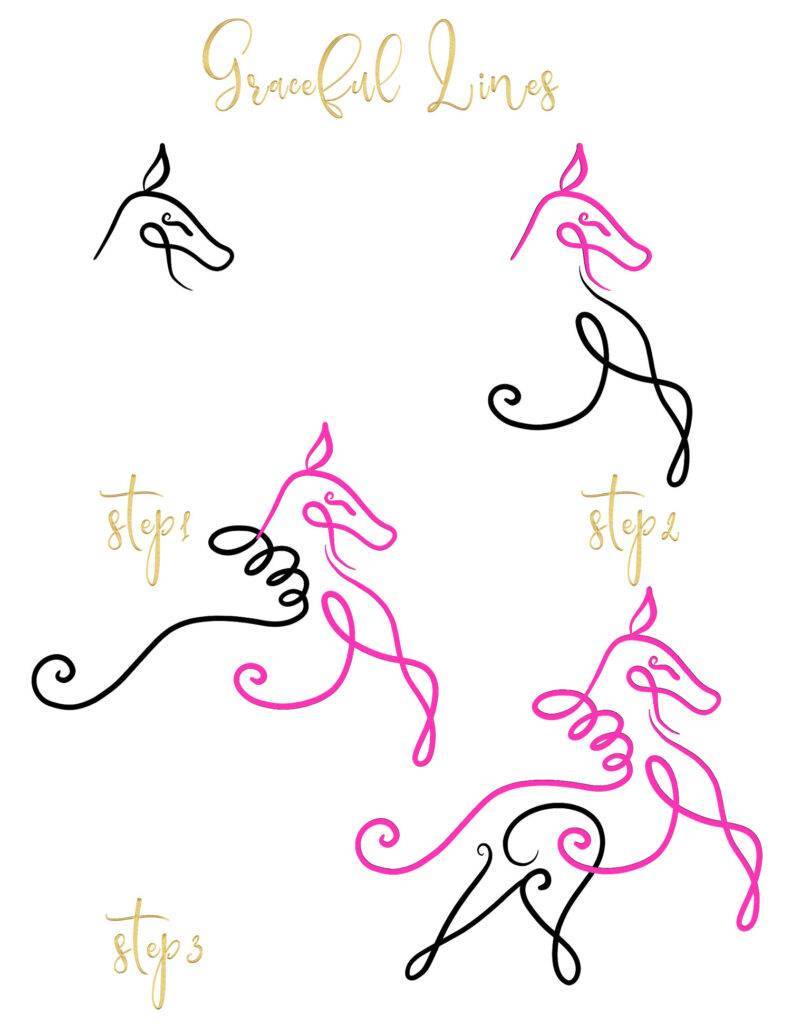
Download 100 Step-by-step Trending Drawing Guides
To learn the art of graceful lines, try out this idea:
5 Super Secrets for Stunning Pencil Sketch Drawings
Here are five “super secrets” for creating stunning pencil sketch drawings, perfect for enhancing your skills and adding depth to your artwork:
- Utilize Varied Line Weights: One secret to dynamic sketches is varying the line weight. Use a light touch for faint lines and apply more pressure for bold, dark lines. This technique adds depth and interest to your drawings, making them appear more three-dimensional.
- Master the Art of Layering: Start with light, soft layers of graphite and gradually build up to darker tones. This layering technique allows for more control and subtlety in your shading, leading to a more realistic and nuanced sketch.
- Incorporate Textural Contrast: Experiment with different pencil strokes to create a variety of textures. Smooth shading for reflective surfaces, cross-hatching for rough textures, and stippling for a porous look can dramatically enhance the realism and intrigue of your sketches.
- Focus on the Power of Negative Space: Pay attention to the areas around your subject, not just the subject itself. Utilizing negative space effectively can help to frame and balance your drawing and can create a powerful visual impact.
- Use a Blending Stump for Subtle Transitions: A blending stump, also known as a tortillon, can be used to smoothen graphite for subtle gradations of tone. This is particularly useful for creating realistic skin textures or soft backgrounds.
By integrating these techniques into your pencil sketching practice, you can elevate the quality of your drawings, making them more compelling and visually striking.
Graceful Lines Idea:
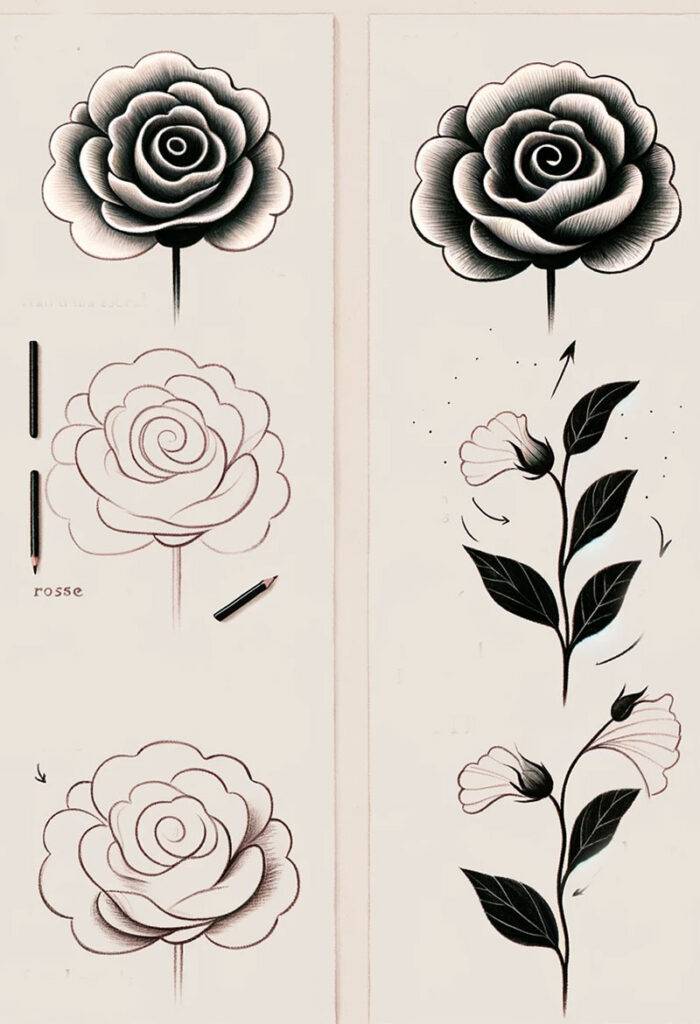
18 Relaxing and beautiful Pencil Sketch Drawings Ideas
Creating pencil sketch drawings can be both relaxing and artistically fulfilling. Here are 18 ideas for beautiful pencil sketches that you can try:
- Tranquil Landscape: Sketch a serene landscape, like a quiet lake at sunrise or a rolling meadow in the afternoon sun.
- Classic Still Life: Arrange a few simple objects like a vase, a book, and a fruit bowl, and capture their shapes and shadows.
- Gentle Animal Portraits: Focus on the soft features of animals, like the delicate fur of a sleeping cat or the peaceful expression of a grazing horse.
- Botanical Illustrations: Draw detailed sketches of flowers, leaves, or branches, highlighting their intricate patterns and textures.
- Minimalist Seascapes: Create a simple seascape with calm water and a distant horizon to convey a sense of tranquility.
- Architectural Details: Focus on the interesting aspects of buildings, such as an ornate window or an ancient door.
- Abstract Forms: Experiment with abstract shapes and forms, allowing your pencil to move freely across the page.
- Soft Portraiture: Sketch a close-up of a loved one’s face, capturing their peaceful expressions.
- Starry Nights: Draw a night sky filled with stars and perhaps a sliver of the moon, evoking a sense of calm.
- Feathers and Leaves: Focus on the delicate details of feathers and leaves, exploring their textures and patterns.
- Dreamy Cloudscapes: Capture the ethereal beauty of clouds in various formations.
- Rustic Scenes: Sketch old barns, wooden fences, or a countryside path for a rustic charm.
- Water Reflections: Try capturing the reflections in a body of water, like a pond or a quiet river.
- Quiet Cityscapes: Draw a city street in the early morning hours when it’s calm and empty.
- Vintage Objects: Sketch antiques or heirlooms, focusing on their unique shapes and histories.
- Musical Instruments: Draw a gently resting guitar, piano, or violin, emphasizing their elegant lines.
- Enchanting Forests: Create a scene of a dense forest with light filtering through the trees.
- Personal Memories: Illustrate a personal memory or a scene from a dream, focusing on the feelings it evokes rather than the details.
Want More…
If you’re looking for more ideas, you can give our easy pencil drawing guide with 39+ ideas a try, or try out the The Ultimate Step-by-Step Flower Guide with 96 Drawing Ideas if you love flowers.
Want to practice your lines and make graceful and lovely doodles? Try out the Graceful Line Collection. Plus, learning lines will also impact your pencil drawings because lines make structures and figures.
Watch How to Videos below:
Download 100 Step-by-step Trending Drawing Guides

